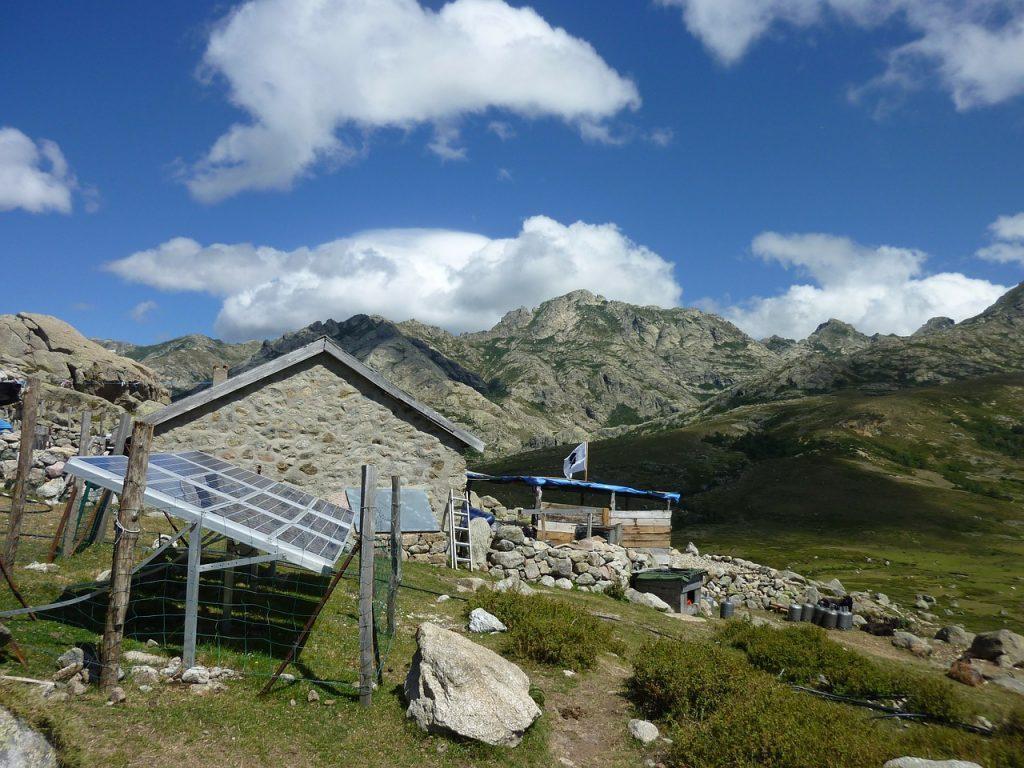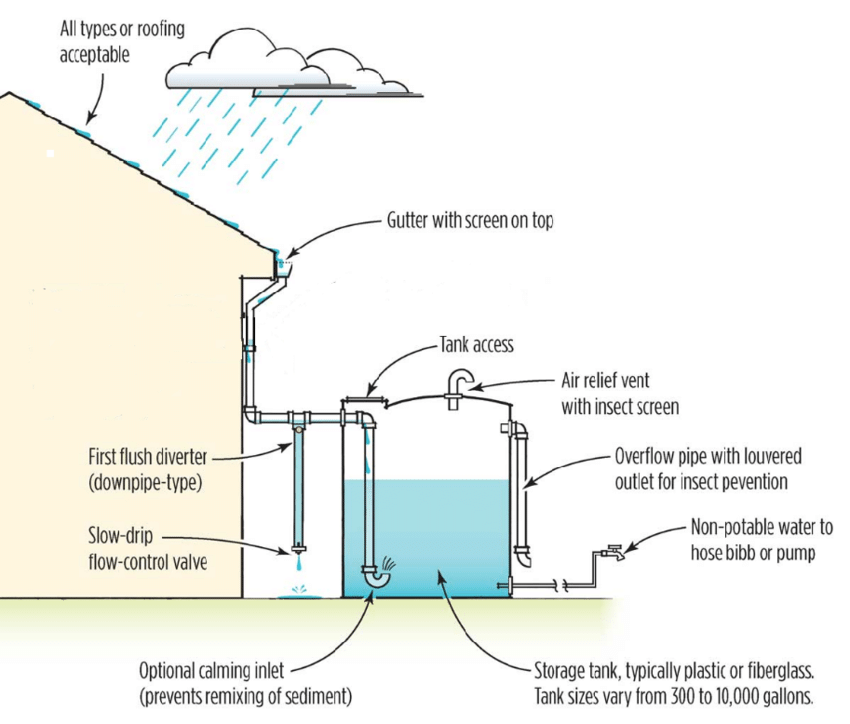The term “off-grid” refers to a building that is not connected to the electric and natural gas public grid. That is, it’s self-sufficient for light, power and heat (Vannini & Taggart, 2015). That’s how the idea of “off-the-grid living” was first conceived, but over time, the definition expanded to include other fields. Those include design and construction, water sources, sanitation and waste disposal, food sources, and communications.
Some people prefer to live off-the-grid to live autonomously, not relying on public grids and utilities. The end goal is to lead lives that are more sustainable, more environmentally conscious, and less dependent on non-renewables.

Going off-the-grid means fully or partially reinventing domestic life. As such, there are important things to consider before taking the leap. THRIVE is here to help you make an informed decision about living off-the-grid.
Things to Consider
Is off-grid living legal?
One of the most important factors to consider is ordinances and zoning restrictions. If your property lies in a restricted zone, it may be illegal to undertake “off-grid” activities. These include things like producing your own energy, growing your own food, and raising livestock.
This article by Off Grid World goes into further detail about the legality of off-the-grid living. They explore some ordinances and zoning restrictions that limit off-grid living. Some examples include:
- Disconnecting from the public energy grid, or restrictions for constructions if there is no connection
- Properties not connected to the public water grid
- Septic systems
- Restrictions for agricultural use, such as livestock
- Minimum square footage for building permits. This could be a challenge if the design of a sustainable building requires it to be smaller than the minimum
- Minimum lot size. In some rural areas the minimum lot size can be larger than what is suitable and affordable
How much does it cost to go off-the-grid?
The cost of living off-the-grid depends entirely on how intense you wish to be. That could range anywhere from a behavioral change, like switching to a zero-waste lifestyle, to constructing an off-grid building complete with its own energy and sanitation systems.
These are some of the costs that living off-the-grid could include (Rejba, 2021):
- Buying land, which depends on the amount needed and the characteristics of it (location, road access, water access, and terrain)
- Constructing buildings (house, a chicken coop, a greenhouse and a barn)
- Installing autonomous energy, heating, water, and sanitation systems
- Farming equipment
- Monthly expenses (maintenance, taxes, insurance, and communication)
Are you mentally prepared for living off-grid?
Depending on the off-the-grid level you decide on, a challenge that is often overlooked is mental preparation. Living off-grid is best done by those who know what they’re getting into (Murray, 2020).
In some cases, living off-the-grid means sacrificing modern day amenities. It could also mean living in isolation, with very little human interactions. This happens when the location is far from hubs, whereby employment could also be a challenge.
Also, going off-grid could require a work load equivalent to multiple full-time jobs, which demands expert time management skills (A Modern Homestead, n.d.). In some cases it’s necessary to plan months ahead, keep records, maintain the property and systems, grow food, or take care of livestock.
Don’t Get Discouraged
Although it’s important to consider the above points before you make a decision about going off-the-grid, don’t get discouraged. If you want a more sustainable, environmentally-conscious future, there are small steps that you can take to start your off-grid journey.
At the same time, if you’re prepared to fully reinvent your domestic life, we also offer you a glimpse of the several options available.
Sustainable design and construction for off-grid living
It is important to apply sustainable design and construction concepts when building new off-grid buildings, or retrofitting existing ones. Buildings have direct and indirect effects on the environment, people, and economy. As such, becoming sustainable requires effort to balance the need of each of these areas.
According to The National Institute of Building Sciences, there are six fundamental principles for sustainable building design (WBDG Sustainable Committee, 2018):
- Optimize site potential. This includes proper site selection and the reuse or rehabilitation of existing buildings. For instance, the location, orientation and landscaping of a building can be crucial to energy use
- Optimize energy use. It’s essential to reduce energy load, increase efficiency, and maximize the use of renewables
- Efficient water use. Be sure to reuse or recycle water on-site when feasible
- Integrated and intelligent use of materials. Choose materials that maximizes their value, prevents pollution, and conserves resources
- Enhance indoor environmental quality. Maximise daylight, improve heating and cooling systems, optimise acoustic performance, and avoid using materials with high-volatile organic compounds emissions
- Optimize operational and maintenance practices. This contributes to better working environments, higher productivity, reduced energy use, reduced costs, and preventions of failures
Producing energy off-grid
Being self-sufficient for energy production is one of the most common practices of off-the-grid living. If producing your own energy makes economic sense, you want independence from the energy providers, or you’re committed to non-polluting energy sources, there are several options that you can consider (U.S. Department of Energy, n.d.):
- Solar electric or photovoltaic systems, that convert sunlight into electric energy
- Wind electric systems, that convert the kinetic energy in wind into electricity
- Micro-hydropower systems, which transforms the energy of flowing water into rotational energy, that is converted into electricity
- Hybrid wind and solar systems, which offer advantages in areas where wind speeds are lower in summer when the sun is brightest, and vice versa in winter

Off-grid water sources
If you’re considering going off-the-grid for water services, this must be one of your priorities. Water is an unconditional need and a basic element of anybody’s survival. These are your options:
- Collecting rainwater from your roof and storing it in barrels or large cisterns, depending on your needs. A rainwater harvesting system consists of three basic elements: a collection area, a conveyance system, and storage facilities (Organization of American States, 1997)
- If your property has underground water, drilling a well can be an option. With a submersible pump and a supply line, the water is pushed to a pressure tank, and then piped anywhere is needed
- Flowing water from creeks or streams, which is conducted to your building through a similar system to well water
The level of treatment required for captured rainwater depends on intended use (potable or non-potable). A primary filter to remove any debris is enough for non-potable use of the captured water. However, if you plan to drink the captured rainwater, the level of treatment required is extensive. Chemicals are often used to purify water before potable use. Chemicals added to water include disinfectants, oxidants, coagulants, flocculants, algicides, antioxidants and chemicals for softening, pH adjustment, fluoridation, and scale prevention. Sometimes these chemicals may be used in specific combinations depending on the level of microorganisms present. According to the National Guidelines for Water Recycling: Managing Health and Environmental Risks, the tolerable risk from a pathogen cannot exceed 10-6, in other words 1 infection per 100000 exposed consumers/year. Thus, any treatment or combination of treatments picked for treating the rainwater to a drinkable level needs to be below this limit. Therefore, it is important to pay attention to inspections of systems, to check that the preventive measures used to protect water supplies are functioning. This is especially important in rural and remote areas because the water can be easily exposed to livestock and human waste

Sanitation and waste disposal
Sanitation refers to the treatment and disposal of grey water and black water, which is a critical component of domestic life. Black water is any waste from toilets and urinals and grey water is wastewater from washing, laundering, bathing or showering (EPA South Australia, n.d.).
Grey water needs to be treated before returning to the environment. You can also recycle it whether treated or untreated. Depending on the kind of treatment, it can be used for garden watering, toilet flushing, and in the laundry. Untreated grey water can be used in gardens, as long as it was not in contact with any toileting fixture, used to wash pets, or used in kitchens and dishwashers (Victoria State Government, n.d.).
Properly treating black water and human excreta is vital. This is because the health of the inhabitants of the property and the environment depend on it. The most common options to deal with it are septic tank systems, sewage treatment plants, and compost toilets.
For waste disposal, a zero-waste strategy can be your best option. This strategy should include a waste prevention policy, proactive reuse, and optimized separating at source (Zero Waste Europe, n.d.). Separating at source allows other helpful practices, such as composting.
Farming off-the-grid
Another option when going off-grid is to grow your own food. This is a healthy and sustainable alternative that isn’t restricted to large properties. Small fruit and vegetable gardens can be grown in a city house backyard, or even in apartments.

There are different crops that you can grow, such as fruit and nut trees, berries, vegetables, herbs, and grains. You can even raise livestock and feed them with the crops you produce. This would make the livestock your own source of protein.
Communication
If you decide to live off-the-grid in a rural or remote area, communication can be a challenge. It is important to be aware of these problems and their solutions. These include satellite communication, personal hotspots, landlines, and radio communication (Rejba, 2021).
A Different Perspective
Here at THRIVE we want to offer a different perspective of off-the-grid living. If you are unsure or don’t have the mean to go fully off-grid, but still want to lead a more sustainable life, there are still many important actions that you can integrate to your lifestyle.
We encourage you to keep striving for your ideals, educate yourself about your options, and make informed decisions. Visit our webpage for more information on how THRIVE can support you, or our blog for more resources on sustainability and sustainable living.
